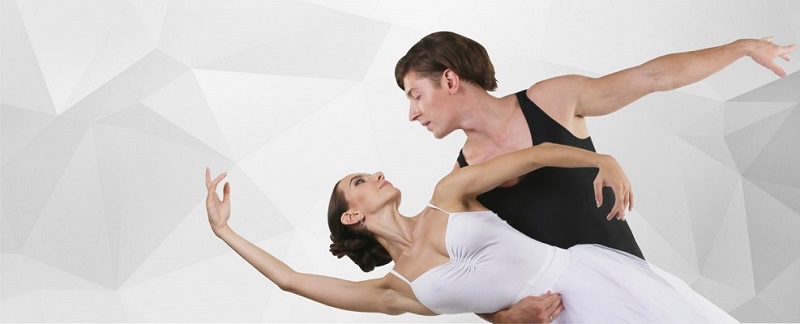This site uses cookies. By using it, you agree with it.
I understand
Gymnastic or ballet leotard?

Gymnastic leotard.
Gymnastic leotard is a type of sportswear made of elastic fabric. It is widely used in choreography, ballet, sports and modern gymnastics, acrobatics, aerobics, trampoline jumping, figure skating. Used as a regular garment for training and trials, but also for performances on stage and competitions.
Gymnastic and ballet leotards are sewed on the elastic solid materials, which are well stretched and ensure the tight fit of the figure, such as Cotton, Polyamide, Biflex and Elastane. Gymnastic leotards sleeves may be of any length. Nowadays, they are very popular classic gymnastic leotard with short sleeves, gymnastic leotard with 3/4 sleeves and gymnastic leotard with long sleeves. The ballet leotard can also be sleeveless, with wide or narrow shoulder straps (Camisole). The front neckline of leotard could be of any shape, it can reveal the shoulder or it can hide it. Ballet leotards without neckline are sewn with High neck. Similarly, the size and shape of the neckline on the back depends on the model.
The gymnastic leotard usually dressed for underwear - for panties or sometimes for Bodysuit, which are usually body colored. Gymnastic leotards used in sports competitions are strictly prescribed. With ballet leotard ou can wear tights, gymnastics leggins or or dance trousers and shorts, that can also be dressed on leotard. During trainings or breaks in between, the leotard can be wear with any kind of garment: ballet skirts and tutu, leggings, gymnastic shorts, t-shirts, shirts, bolero, warm-up leggings or suits and any other warm-up clothing.
Leotard is called in honor of the French acrobat Jules Léotard (1838-1870), who first appeared in a similar tight suit. In the 19th century, such a tight suit was called leotard and used only in a circus. Such clothes were worn gymnasts, strongmens, acrobats. For leotard usually dressed shorts or skirt (e.g., as in the painting of Pablo Picasso "Girl on a ball").
In the 20th century the gymnastic leotard got into the ballet, where it was first used during the exams and then during the stage performances. Ballet leotard without ornaments and decorations was often used in his performances by choreographer George Balanchine (Four Temperaments, 1946; Ensemble, 1957; Symphony in Three Movements, 1972 and others). After that, many other choreographers of the second half of the 20th century took over this tendency. The first who appear on the ballet scene in a costume based on an elastic ballet leotard was the Russian ballet dancer Maja Plisecká in a ballet that was created for her in 1973 by the French choreographer Roland Petit (costumes for ballet designed by Yves Saint Laurent).


